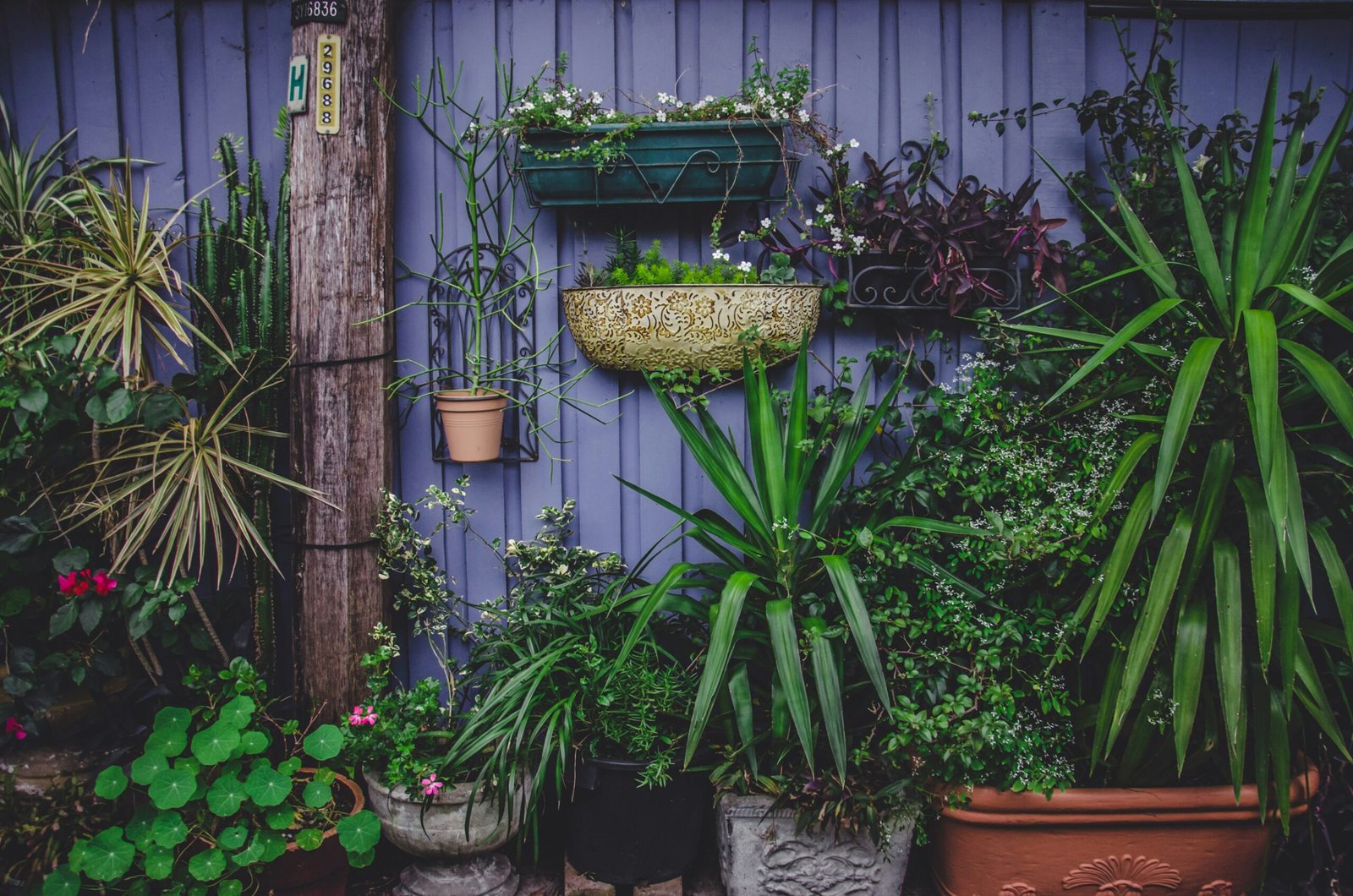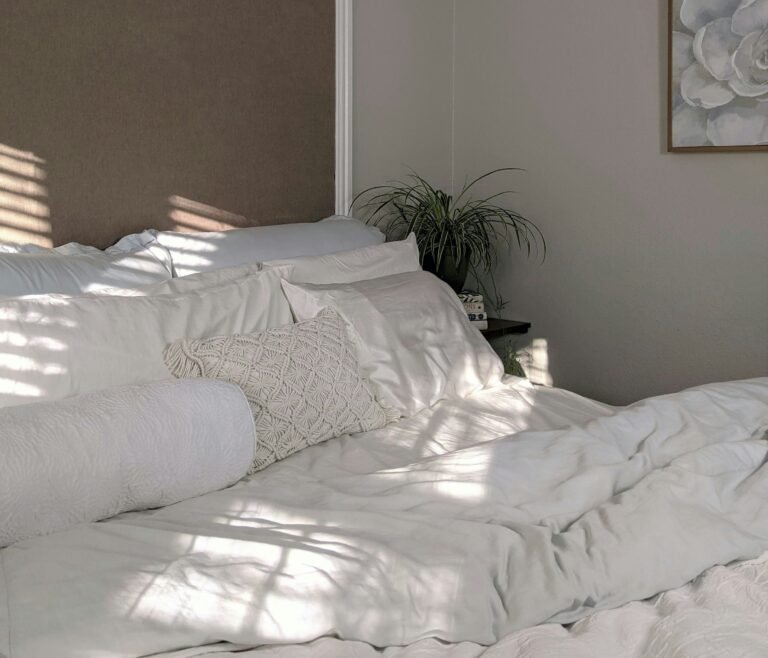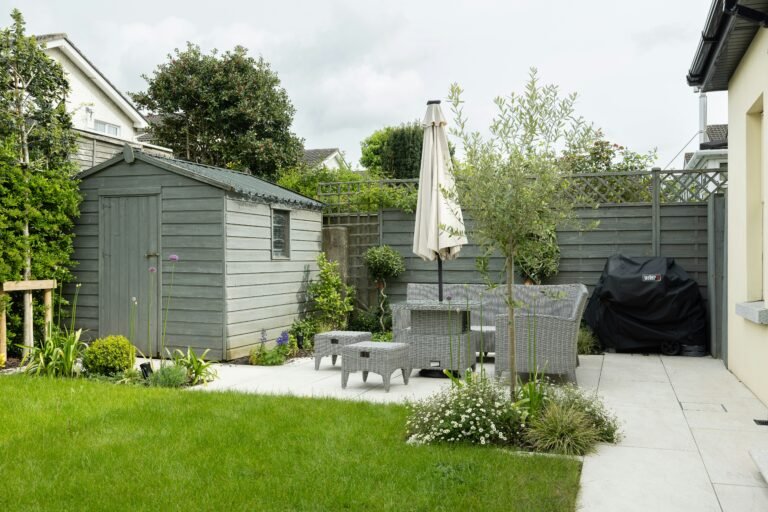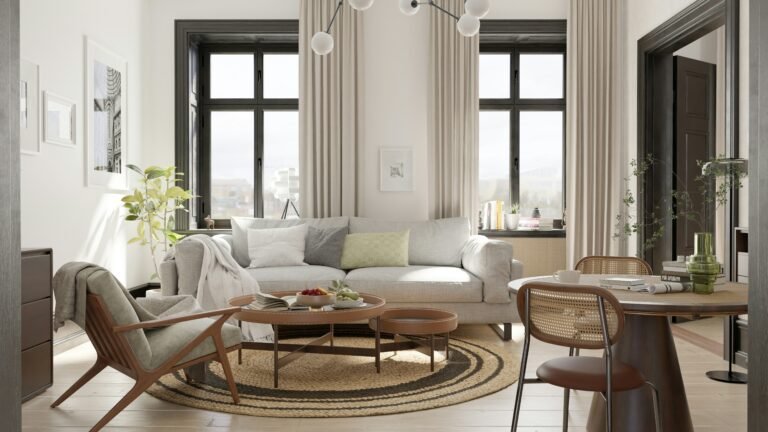When I first moved into an apartment with a narrow balcony, I thought my gardening days were over. Limited square footage, strict building rules, and minimal sunlight made traditional planters seem impossible. But that’s when I discovered the power of vertical gardening ideas — a clever approach that transforms bare walls and railings into lush, living art. It’s not just about saving space; it’s about rethinking how plants can shape your home environment.
The problem with limited square meters (and the vertical solution)
Urban homes, especially apartments and condos, often come with spatial challenges. You may have just a balcony railing or a sunny wall — but those can be turned into thriving mini-gardens. Vertical systems use height instead of width, letting you grow herbs, flowers, and even vegetables without cluttering the floor. According to the Royal Horticultural Society, vertical setups also improve air circulation and accessibility, making them ideal for small spaces.
What I’ve learned from balcony gardening firsthand
From my own experience, starting small helps. A simple hanging rail planter or tiered rack can completely change the look of a balcony. I remember my first attempt: a few herbs in recycled cans mounted on a board — not perfect, but incredibly rewarding. Over time, I learned that lightweight containers, drip systems, and modular racks make a huge difference for long-term success.
Quick overview of what you’ll get in this guide
In the sections ahead, I’ll share practical vertical gardening ideas for both outdoor and indoor spaces — from simple DIY projects to more advanced systems like living walls. You’ll find tips for choosing the right vertical planters, maximizing sunlight, managing water efficiently, and designing your setup for both beauty and function. Whether you have a balcony, patio, or tiny terrace, this guide will help you grow more — even in less space.
For even more ways to transform compact outdoor areas, explore Balcony Garden Ideas: How to Turn Small Spaces Into Lush Retreats.
Planning First: Measure, Light & Load Limits
Before you start buying pots and planters, a successful vertical garden begins with smart planning. I’ve learned the hard way that enthusiasm alone won’t keep plants alive, especially when working with a balcony or compact patio. Taking the time to measure, assess sunlight, and check weight limits will save you from headaches (and water leaks) later on.
Measuring your balcony or patio walls
Start by mapping out your available surfaces: walls, railings, and floor space. Use a measuring tape to record width and height, this determines what kind of vertical planters you can safely install. For example, if you’re hanging a garden wall system, allow at least 30–40 cm of clearance from furniture and doors. I like to sketch a simple diagram of my balcony before buying anything; it helps me visualize how many tiers or racks I can fit without overcrowding.
If you’re using free-standing shelves or a ladder system, check that the base won’t block pathways or access to doors. It sounds obvious, but in small spaces, every centimeter counts.
Sun, shade, and wind patterns
Even the best vertical gardening ideas can fail without the right light. Spend a few days observing how sunlight moves across your balcony. Morning light is ideal for most herbs and greens; strong afternoon sun may require shading. If your balcony faces north (in the Northern Hemisphere), focus on shade-tolerant plants like ferns or pothos.
Wind is another silent enemy. Gusty conditions can dry soil quickly and stress plants. Simple windbreaks like bamboo screens or mesh panels can protect delicate foliage while preserving air circulation.
(For reference, Better Homes & Gardens has an excellent guide on assessing sunlight and airflow before planting.)
Balcony weight limits, drainage & local rules
Every balcony has a load capacity — typically around 60–120 kg/m², depending on the building. When stacking pots, water, and soil vertically, the total weight adds up fast. Use lightweight materials like felt, recycled plastic, or vertical racks made of aluminum. Always double-check your building’s regulations or HOA rules about hanging planters or drilling walls.
Lastly, plan for drainage. Use saucers or trays to catch runoff, and angle your setups so excess water doesn’t drip onto neighbors below. Trust me, nothing ruins balcony peace faster than water stains on someone else’s railing.
Once you’ve measured, mapped, and confirmed that your space is safe, you’re ready for the fun part – exploring different vertical gardening ideas that match your style and goals.
Core Vertical Gardening Ideas for Balconies
When it comes to transforming a small balcony into a vibrant green escape, creativity is your biggest ally. Vertical gardening isn’t limited to one look or material, it’s about stacking, hanging, or arranging plants upward to maximize your limited space. I’ve experimented with several vertical gardening ideas over the years, and below are the ones that consistently deliver both beauty and practicality.
Rail-mounted racks and modular vertical planters
If your balcony has a railing, you already have a natural structure for vertical design. Rail-mounted racks or clip-on vertical planters are perfect for growing herbs, strawberries, or trailing flowers. I recommend using lightweight containers with built-in hooks to avoid extra drilling.
For renters, modular systems that hang over railings or rest on ledges are ideal — they can be removed easily when you move. Many modern designs even include integrated watering systems that evenly distribute moisture to each tier.
Pro tip: choose herbs or greens that grow compactly, like basil, parsley, or lettuce. They don’t require deep soil and look great cascading down from each level.
Ladder shelves, tiered stands, and repurposed furniture
A simple wooden ladder can become an instant DIY vertical garden. I’ve used a thrifted stepladder to display succulents and ferns. It created a layered, greenhouse-like effect without taking up more than half a square meter of floor space. Tiered stands and narrow shelving units can hold multiple pots vertically while staying accessible for watering.
If you’re worried about moisture damaging wood, coat the surfaces with outdoor varnish or use waterproof trays beneath each pot. You can also repurpose old bookcases or crates, sustainable and stylish!
Trellises for climbing plants and edible vines
Trellises are a vertical gardener’s best friend. They provide structure for climbers like peas, beans, cucumbers, or flowering vines such as jasmine and morning glory. I love training plants to create a “living wall”, it adds privacy and greenery at once.
Opt for lightweight, foldable trellises that attach to railings or pots. Metal grid panels are great if you want a modern look and easy attachment points for hanging planters.
Hanging systems: ceiling hooks, macramé, and railing pots
When floor space is limited, go overhead. Hanging planters, macramé holders, and railing pots let you suspend greenery at eye level. Mixing different heights creates depth and interest, just ensure everything is securely anchored. I once used stainless-steel hooks rated for 20 kg, which held up through storms and watering.
If you’re new to hanging setups, start small: one or two planters near a wall or corner. It’s easier to manage watering and balance until you’ve got the layout right.
Whether you prefer modern metal racks or rustic DIY builds, the key is balance: sturdy support, proper light, and easy access for watering. Once your balcony setup is ready, we can move indoors and explore more creative vertical gardening ideas for compact patios and rooms.
Creative Vertical Gardening Ideas Indoors or on Tiny Patios
Not every home has an outdoor balcony, but that doesn’t mean you have to give up on greenery. Some of the most charming vertical gardening ideas work beautifully indoors — turning empty walls, corners, or even windows into mini ecosystems. When space is scarce, the goal is to make your plants part of your interior design. Here are some of my favorite setups that have worked wonders in tight urban spaces and shaded patios.
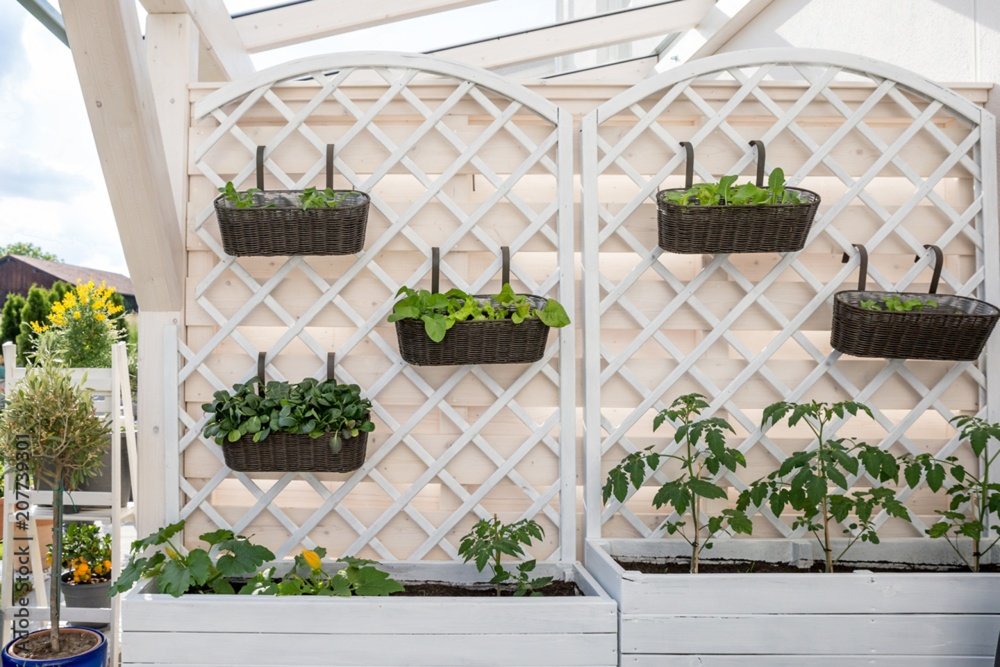
Pegboards, grids, and wall hooks
Pegboards aren’t just for tools — they’re a vertical gardener’s secret weapon. Mount a sturdy board on a kitchen or living room wall, then add hooks or shelves for lightweight pots. I once used a black metal grid panel (the kind used in retail displays) and hung small terracotta pots from S-hooks. It instantly turned a blank wall into a vibrant herb garden.
You can mix pots and hanging baskets for a layered look, or even clip small lights onto the frame to help plants thrive in low-light corners.
(For inspiration, check out IKEA’s SKÅDIS pegboard system — flexible and renter-friendly.)
Pocket planters and hanging shoe organizers for herbs
Fabric pocket planters are a brilliant solution for small-space gardening. They’re light, inexpensive, and surprisingly water-efficient. I like using them for herbs like mint, thyme, and oregano — the roots stay contained, and the cascading growth looks lush against the fabric backdrop. If you’re into DIY projects, a simple hanging shoe organizer works too. Choose one with breathable material and hang it on a door, balcony wall, or bathroom corner for a quirky, low-cost DIY vertical garden.
Magnetic planters and compact shelving
For the tiniest areas, magnetic planters are lifesavers. They attach to metal surfaces like fridges or railings and hold small succulents or air plants. These mini green accents bring life to kitchens and offices without cluttering the counter.
You can also use narrow, wall-mounted shelves for small pots. Just make sure to install them with anchors that can handle weight and moisture.
Safety and drainage tips for indoor setups
Indoor gardens need careful attention to water control. Always use pots with saucers or self-watering systems to prevent spills. Felt or plastic backing can protect your walls from moisture damage. If sunlight is limited, consider full-spectrum LED grow lights — compact, energy-efficient, and effective even for low-light plants like pothos or philodendrons.
The beauty of these indoor-friendly vertical gardening ideas is how adaptable they are. Whether you’re using a pegboard in your kitchen or a hanging garden by your window, you’ll find that greenery instantly softens and enlivens even the smallest spaces.
From Vertical Planters to Living Walls: Building the Structure
Once you’ve got your space mapped out and your creative layout planned, it’s time to talk about the backbone of your setup — the structure that holds everything together. Whether you’re using simple racks or aiming for a lush, self-watering living wall, the framework you choose determines how durable, efficient, and beautiful your vertical gardening ideas turn out. I’ve tried everything from recycled crates to modular kits, and each has its charm depending on your goals and budget.
Freestanding towers vs. wall-mounted frames
Freestanding towers are perfect for renters or anyone hesitant to drill holes in walls. They’re easy to move, offer multiple planting tiers, and can be customized with different pot sizes. I like using narrow, tall plant stands with adjustable shelves. They fit neatly in balcony corners and provide great vertical depth.
Wall-mounted frames, on the other hand, are a more permanent option. They let you build impressive, space-saving displays directly on walls or fences. When installing one, always use stainless-steel screws and wall anchors rated for outdoor use to avoid rust and slippage. Modular systems like WallyGrow or Woolly Pocket (both available online) make setup easy with lightweight, breathable felt pockets that hold soil securely.
Materials: wood, metal, felt & upcycled options
Each material has unique benefits.
- Wood: Warm and natural-looking, but make sure it’s sealed or treated for outdoor use. Cedar and redwood resist moisture best.
- Metal: Great for modern aesthetics. Opt for galvanized or powder-coated steel to prevent rust.
- Felt and fabric: Lightweight and ideal for wall gardens; they allow airflow and prevent root rot.
- Upcycled options: I’ve used old pallets, tin cans, and even wine crates as DIY vertical garden bases — they’re affordable and full of character.
When reusing materials, ensure they’re clean and chemical-free, especially if you’re growing edibles.
Drip-irrigated living walls vs. simple stack planters
If you want a low-maintenance system, drip irrigation is a game-changer. A basic kit includes a reservoir, tubing, and emitters that deliver water evenly to each plant pocket. This setup minimizes water waste and keeps your plants hydrated while you’re away — ideal for busy schedules.
For a simpler approach, stack planters are excellent. These are layered containers that let water trickle down from one level to the next. I started with a 3-tier stack planter system for strawberries and herbs — it required almost no daily watering and looked stunning by mid-summer.
(For an in-depth look at living wall systems, see the University of Florida IFAS Extension’s guide on vertical gardening — a great technical resource.)
Choosing the right structure is about balancing beauty, budget, and maintenance. Whether you opt for sleek modular panels or rustic upcycled wood, your foundation will determine how long your garden thrives — and how enjoyable it is to maintain.
Planting Guide for Small Space Gardening
Once your structure and planters are ready, it’s time for the fun part – choosing what to grow. Selecting the right plants for your vertical gardening ideas can make or break the success of your setup. The goal is to pick varieties that thrive in your specific light and space conditions while complementing each other in size, color, and watering needs. Over the years, I’ve learned that compact, resilient plants perform best in vertical systems, they adapt easily and look great year-round.
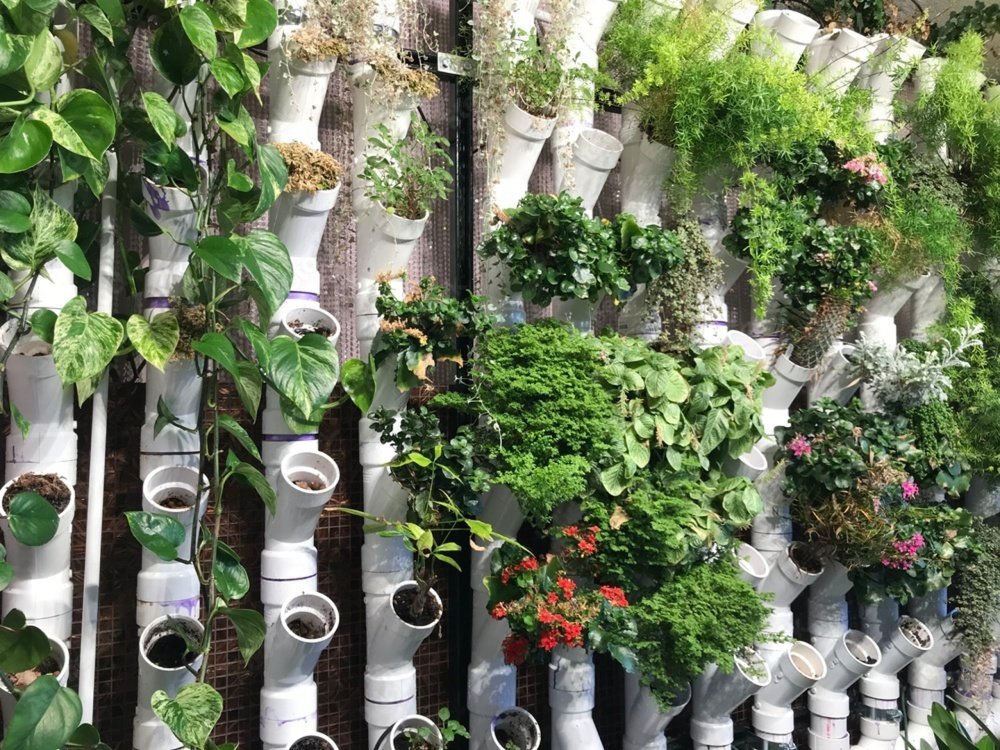
Best edibles for balconies (herbs, greens, strawberries)
Edible plants are incredibly satisfying in small spaces because you get both beauty and harvest. My top performers for balcony gardens include:
- Herbs: Basil, mint, parsley, thyme, and oregano. They have shallow roots and grow well in small containers.
- Leafy greens: Spinach, arugula, kale, and lettuce varieties like ‘Buttercrunch’ thrive in partial sun and are easy to pick fresh.
- Fruiting plants: Strawberries and cherry tomatoes are perfect for hanging pots or stacked vertical planters. They trail beautifully and offer color as they fruit.
A useful rule of thumb: plant edibles that grow downward or outward rather than upward — it saves space and looks fuller.
(For more edible plant recommendations, the Royal Horticultural Society’s plant finder is an excellent resource.)
Ornamentals that thrive vertically (vines, trailing flowers)
If you’re after a decorative look, go for plants that spill, climb, or cascade. Some of my favorite ornamental species for small space gardening include:
- Vines: Morning glory, sweet pea, ivy, and jasmine — all ideal for trellises or mesh supports.
- Trailing plants: Pothos, string of pearls, and ferns bring lush texture to indoor vertical gardens.
- Compact bloomers: Petunias, begonias, and nasturtiums add pops of color throughout the growing season.
Mixing edible and ornamental plants can also create a dynamic, visually rich setup. I often pair basil and marigolds — they repel pests and look great together.
Companion planting & watering compatibility
Just because plants share a wall doesn’t mean they share habits. Group plants with similar water and light needs to avoid stress. For instance, succulents prefer drier soil, while lettuce loves consistent moisture.
When planting vertically, place thirstier plants lower down — they’ll benefit from runoff water from the tiers above. It’s a simple yet efficient watering strategy I’ve used successfully for years.
Potting mix, soil depth, and nutrients
A well-draining potting mix is crucial. I blend standard potting soil with perlite or coco coir for lightweight moisture control. Most herbs and flowers do fine with 15–20 cm of soil depth, but root veggies like radishes or carrots (if you try them) need at least 25 cm.
Feed your plants every 3–4 weeks with a balanced, water-soluble fertilizer, especially in compact systems where nutrients leach quickly.
Smart plant choices are the secret to thriving vertical gardening ideas — they’ll reward you with lush growth, vibrant color, and sometimes even dinner.
Watering, Feeding & Maintenance
A vertical garden may look effortless once established, but keeping it thriving requires a bit of strategy. Because plants in vertical planters dry out faster than those in ground beds, you’ll need to balance moisture, nutrition, and airflow carefully. Fortunately, once you set up the right system, maintenance becomes quick and satisfying — more like a mindful daily ritual than a chore.
Self-watering pots, drip systems, and hacks
In small vertical setups, efficient watering is everything. I’m a big fan of self-watering containers — they have built-in reservoirs that keep the soil consistently moist for days. For larger structures, a drip irrigation system is worth the investment. It uses small tubes and emitters to deliver water evenly to each pocket or planter.
If you prefer a DIY approach, repurpose a plastic bottle: pierce tiny holes in the cap, fill it with water, and invert it into the soil. This simple trick keeps moisture levels steady, especially for balcony gardens exposed to wind and heat.
For best results, water early in the morning when evaporation is lowest, and always check the top 2–3 cm of soil before adding more water.
(The University of Illinois Extension offers practical drip irrigation guides tailored for container gardens.)
Fertilizing routine for container gardens
Nutrients leach out quickly in vertical systems because water drains downward. I feed my plants every three weeks with a diluted, balanced fertilizer (around 10-10-10 NPK). Organic liquid feeds — like seaweed extract or compost tea — are great for edible gardens.
Remember: it’s better to feed lightly and consistently than to overfertilize once a month. Excess salts can build up in containers, harming roots over time.
Pruning, training, and harvesting tips
One of the joys of small space gardening is the intimacy — you’re always within reach of your plants. Regular pruning keeps growth balanced and encourages flowering or fruiting. For climbing species like beans or jasmine, gently tie new shoots to trellises as they grow.
Harvest herbs frequently to keep them compact and bushy. I usually trim ⅓ of the growth at a time — enough to use, but not enough to stress the plant.
Pest and disease control in tight spaces
Because airflow is limited in vertical gardens, pests like aphids, spider mites, or mildew can appear quickly. Inspect your plants regularly, check leaf undersides and stems. I prefer natural treatments like neem oil or a mild soap spray; they’re safe and effective.
Another trick: rotate plant positions every few weeks. It improves air circulation and ensures all plants receive even light.
Vertical gardens are easy to maintain once you build a rhythm. With a reliable watering system, smart feeding, and occasional trimming, your balcony or indoor garden will stay lush, productive, and low-stress year-round.
Design & Style: Make Your Balcony Garden Stand Out
A vertical garden isn’t just functional, it’s a design statement. When done right, your setup can be both a lush green retreat and a stylish extension of your living space. Whether you’re working with a balcony, patio, or indoor nook, thoughtful styling can turn even the smallest corner into a personal oasis. Over the years, I’ve found that blending aesthetics with practicality brings the most joy and encourages me to spend more time tending to my plants.
Color themes, textures & patterns on vertical surfaces
Just like interior design, your vertical gardening ideas benefit from a color palette. I like to start with the tones of my planters — neutral pots highlight the greenery, while colorful or patterned containers create energy and warmth.
Mixing textures adds depth: glossy leaves (like pothos) contrast beautifully with matte, fuzzy ones (like sage or dusty miller). You can also arrange plants in a gradient — taller and bushier species at the top, trailing varieties cascading downward for a natural waterfall effect.
Consider the background too: a painted wall, wooden lattice, or metal grid can serve as an artistic frame for your plants.
Privacy walls with plants
One of my favorite uses for vertical planters is creating privacy. A dense wall of greenery softens harsh lines and gives you seclusion without blocking light. Use tall climbers like jasmine or ivy for height, and fill in lower gaps with ferns or hanging herbs.
If you live in an apartment, this setup doubles as a sound buffer — leaves absorb noise surprisingly well. Plus, it’s much prettier than a plain screen or divider.
All-season vertical gardening ideas
To keep your garden visually interesting year-round, rotate plants with the seasons. In spring, go for bright annuals like petunias or violas. Summer welcomes herbs and edibles. Autumn is perfect for ornamental cabbages or succulents, while winter calls for evergreens or hardy ferns.
You can even integrate fairy lights or lanterns for cozy evening ambience, just make sure any wiring is weatherproof and away from direct watering zones.
My favorite small-space styling tricks
Here are a few design hacks I swear by:
- Use repetition — repeating plant types or pot colors ties everything together visually.
- Add mirrors behind planters to reflect greenery and make small balconies feel larger.
- Mix functional and decorative elements: a small bench or stool doubles as a plant stand.
- Keep pathways clear — negative space is as important as plant space in tight layouts.
(For more design inspiration, check out Garden Design Magazine. They showcase stunning vertical setups in urban homes.)
Designing vertically is an art — balance beauty, practicality, and personality, and you’ll end up with a green wall that feels truly yours.
Budget-Friendly DIY Vertical Garden Projects
One of the most rewarding parts of small-space gardening is creating something beautiful with your own hands. You don’t need expensive kits to achieve a thriving setup — many of the best vertical gardening ideas can be built using recycled or budget materials. Below are three of my go-to DIY vertical garden projects that are affordable, easy to customize, and perfect for balconies or patios.

Pallet Herb Wall
Wooden pallets are a vertical gardener’s dream: sturdy, versatile, and usually free (check hardware stores or recycling depots).
You’ll need:
- 1 clean, untreated wooden pallet
- Landscape fabric or burlap
- A staple gun
- Potting mix and herbs of your choice
Steps:
- Sand the pallet to remove splinters and make sure it’s safe for handling.
- Line the back and sides with landscape fabric, securing it with a staple gun to create planting pockets.
- Fill each pocket with potting mix and herbs like mint, parsley, or thyme.
- Stand the pallet upright against a wall or railing and water gently from the top.
I made my first pallet wall this way — it instantly transformed a dull corner into a rustic kitchen garden and cost under $20.
Gutter Garden Along a Railing
Old rain gutters make excellent narrow planters for shallow-rooted plants.
You’ll need:
- PVC or metal gutters (cut to your desired length)
- End caps and brackets
- Potting mix and small plants (e.g., lettuce, strawberries, succulents)
Attach the gutters horizontally along your balcony railing or wall with sturdy brackets. Drill small drainage holes every 20–30 cm, fill with soil, and plant your favorites. The linear design looks sleek and modern — and you can easily stack multiple levels for more greenery.
Crate Stacker with Built-In Reservoir
If you want a low-maintenance setup, stack three wooden or plastic crates vertically, alternating directions for stability. Insert small water trays or recycled plastic containers between layers — these act as mini reservoirs to keep lower plants hydrated from runoff.
This setup is perfect for balcony corners and herbs that love consistent moisture.
Each of these DIY vertical garden projects proves that you don’t need much space or money to create something truly special. Start small, experiment, and watch your balcony transform into a living masterpiece of your own design.
Want to personalize your setup even further? Get creative with Upcycled Garden Decor Ideas for Sustainable Outdoor DIY Projects.
Safety & Sustainability Considerations
Before you relax and admire your lush new garden wall, there’s one final piece to consider: safety and sustainability. Even the most stunning vertical gardening ideas can cause trouble if they’re not secure or environmentally responsible. I’ve seen balconies where water leaks, weight overloads, or poor anchoring led to real headaches. The good news? A few smart precautions can keep your garden safe, eco-friendly, and built to last.
Anchoring heavy planters & preventing water leaks
Weight is often underestimated in small space gardening. Wet soil, ceramic pots, and water-filled reservoirs add up fast. When hanging or stacking, always check that brackets, screws, or hooks are rated for at least double the load they’ll carry. Use stainless steel or galvanized hardware to resist rust.
For freestanding racks, test stability by giving them a light shake — if anything wobbles, add cross-supports or reposition the base.
Water leakage is another common issue. I once learned this the hard way when a poorly sealed tray dripped onto my downstairs neighbor’s balcony. Always use drip trays, line wooden planters with waterproof sheeting, and angle surfaces slightly so water runs toward safe drainage points.
Rental-friendly, non-permanent options
If you’re renting or dealing with HOA restrictions, go modular. Freestanding ladder gardens, rail-hanging pots, and felt pocket panels don’t require drilling or permanent fixtures. I love how flexible these systems are — you can rearrange them seasonally or take them with you when you move.
Magnetic and suction-mounted planters are also great temporary options for indoor use. They hold well on smooth, non-porous surfaces and leave no marks when removed.
Eco-friendly materials & pollinator-safe plants
Sustainability starts with your materials. Choose recycled plastics, reclaimed wood, or metal structures that can be reused. Avoid treated wood for edible gardens, as the chemicals can leach into the soil.
Plant choice matters, too. Native species and pollinator-friendly flowers like lavender, nasturtiums, and marigolds attract bees and butterflies, even in urban areas. Avoid synthetic fertilizers and pesticides — organic compost and natural sprays do the job safely.
(The National Wildlife Federation has excellent guidance on pollinator-friendly gardening in small spaces.)
A safe, sustainable garden isn’t just about protecting your balcony — it’s about cultivating harmony with your environment. When your setup is both secure and eco-conscious, it becomes a genuine extension of home and habitat.
To make your vertical garden even more nature-friendly, discover How to Create a Pollinator Friendly Garden for Bees & Butterflies.
Troubleshooting Common Problems
Even the most carefully planned vertical gardening ideas occasionally run into hiccups — wilted leaves, soggy soil, or pest surprises. Don’t worry: every gardener faces these challenges. The key is early detection and quick adjustments. Over time, you’ll learn to “read” your plants like old friends — their colors, textures, and growth patterns tell you exactly what they need.
Wilting, yellowing, or leggy plants
When plants start to droop or lose color, it usually comes down to light or watering. Leggy growth (long, thin stems) signals insufficient sunlight. Move affected plants higher up or closer to natural light, or supplement with LED grow lights indoors.
Yellow leaves can mean overwatering or nutrient deficiency. Check drainage holes first — if soil feels soggy, let it dry before the next watering. For nutrient issues, a mild balanced fertilizer often revives leaf color within a week.
I’ve also found that rotating plants within your vertical planters every month helps even out light exposure and prevents lopsided growth.
Dry or soggy soil issues
Because vertical systems rely on gravity, water doesn’t always distribute evenly. The top tiers dry faster while the bottom ones can stay soggy. You can solve this in several ways:
- Add water-retaining granules or coco coir to your potting mix.
- Use drip irrigation or self-watering inserts for consistency.
- Choose plant groupings carefully — drought-tolerant species like succulents belong on top; thirstier ones like lettuce or ferns do best below.
If your mix stays wet for too long, loosen compacted soil or add perlite to improve drainage.
Rust, mildew & pest flare-ups
Limited airflow in vertical gardens can create humidity pockets that encourage fungal growth. If you spot white powdery patches (mildew) or orange spots (rust), trim affected leaves immediately and increase air circulation. Avoid overhead watering — it splashes spores around.
For pests like aphids or spider mites, wipe leaves with a mild soap-and-water solution or apply neem oil weekly. I’ve had great success alternating treatments to keep pests from adapting.
Most problems in small space gardening are easy to fix once you recognize the signs. Think of these hiccups as part of the learning curve — each season, your garden teaches you how to do it better.
Conclusion
When I first started experimenting with vertical gardening ideas, I was simply trying to add a bit of green to an otherwise bare balcony wall. But what began as a small experiment soon became a way of life — one that taught me patience, creativity, and the power of making the most of what I already had. That’s the beauty of vertical gardening: it invites you to think differently about space, growth, and sustainability.
If there’s one takeaway from this guide, it’s that anyone regardless of home size or budget can enjoy the rewards of a thriving garden. With a little planning, a few DIY vertical garden projects, and smart plant choices, your walls, railings, or even indoor corners can turn into flourishing green sanctuaries. The process doesn’t have to be perfect; it’s about discovery. Every new leaf or bloom feels like a small success.
Before you start, review your space, gather a few containers, and choose plants that match your light and lifestyle. Begin small, and let your garden evolve naturally. Once you see how quickly life can grow vertically, you’ll never look at a blank wall the same way again.
So, grab that first pot or pallet, pick a sunny spot, and get planting. Your miniature green paradise awaits.
Alex is the creator of Homely Haven, a space dedicated to simple, stylish ideas for interiors and gardens alike. With a passion for cozy living rooms, inviting outdoor spaces, and practical DIY solutions, Alex shares tips and guides that help turn any house into a true home.
From budget-friendly decorating hacks to weekend garden projects, the goal is always the same: to inspire you to create spaces that feel personal, beautiful, and welcoming. When not writing, Alex is usually rearranging furniture, sketching new garden layouts, or exploring design trends for the next project.

